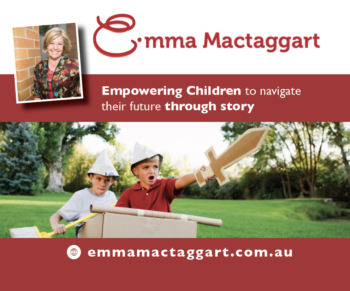Bear with me as I muddle through this a little! You know that I spend my happy days working with children, mentoring them through a collaborative process of creating children’s picture books. It comes from a circular idea of ‘children writing for children supporting children’ and it is even more rewarding when you consider the output is thousands of printed books to place into the hands of even more children.
And all of this requires two main ingredients that are co-dependent: creativity and self-efficacy.
Creativity is the act of turning new and imaginative ideas into reality. Creativity is characterized by the ability to perceive the world in new ways, to find hidden patterns, to make connections between seemingly unrelated phenomena, and to generate solutions.
Creativity involves two processes: thinking, then producing.
If you have ideas but don’t act on them, you are imaginative but not creative. To act upon an idea simply requires self-efficacy, and this is something that seems to occupy my thoughts and predicates the workshops I design and influences the outcomes whenever I am working with children.
Psychologist Albert Bandura defined self–efficacy as one’s belief in one’s ability to succeed in specific situations or accomplish a task. One’s sense of self–efficacy can play a major role in how one approaches goals, tasks, and challenges.
We can bolster our boost our self-efficacy by at first, taking low-risk, slow steps, gradually increasing the speed of the decision making and the risk.
We can also do some physical and practical exercises to support an increase in self-efficacy.
People acquire their self-efficacy beliefs from the following four sources:
- Performance accomplishments: The experience of mastery influences your perspective on your abilities. Successful experiences lead to greater feelings of self-efficacy. However, failing to deal with a task or challenge can also undermine and weaken self-efficacy
- We are going to try some drawing exercises – you will be fully supported to ‘succeed’.
- Vicarious experience: Observing someone else perform a task or handle a situation can help you to perform the same task by imitation, and if you succeed in performing a task, you are likely to think that you will succeed as well, if the task is not too difficult. Observing people who are similar to yourself succeed will increase your beliefs that you can master a similar activity
- We are going to exhibit our work!
- Verbal persuasion: When other people encourage and convince you to perform a task, you tend to believe that you are more capable of performing the task. Constructive feedback is important in maintaining a sense of efficacy as it may help overcome self-doubt
- Positive role of the mentor or teacher…
- Physiological states: Moods, emotions, physical reactions, and stress levels may influence how you feel about your personal abilities. If you are extremely nervous, you may begin to doubt and develop a weak sense of self-efficacy. If you are confident and feel no anxiety or nervousness at all, you may experience a sense of excitement that fosters a great sense of self-efficacy. It is the way people interpret and evaluate emotional states that is important for how they develop self-efficacy beliefs. For this reason, being able to diminish or control anxiety may have positive impact on self-efficacy beliefs. And as a mentor, I lead a breathing exercise and then consciously focus on the children’s state of being.
Let’s look at this last one in more detail, because I believe it is the one that stops us moving towards increasing our self-efficacy.
It is a physiological cue – the feeling in your belly – normally associated with fight or flight!
The fight-or-flight response (also called hyper-arousal, or the acute stress response) is a physiological reaction that occurs in response to a perceived harmful event, attack, or threat to survival. It was first described by Walter Bradford Cannon on the early 1900’s.
It is really fun to give the children you something physical to focus on first! Mudras are poses used in yoga practice and help to establish any creative thoughts into reality.
Surya or Ravi Mudra (Seal of Life) – overall health and wellness.
Gently touch the tip of your ring finger to the tip of your thumb with the other three fingers stretched out.
Gyana Mudra – Creativity
Create an o out of your pointer and thumb.
Yoga Child’s Pose
Finally, one of the best ways to ignite our creativity is by dropping down into a resting pose, otherwise known as Child’s Pose. In Child’s Pose, our third-eye center is connected to the ground beneath us. And our third-eye center is considered to be our source of intuition and creativity.
Breathe – yes breath… Slowly in / out / in / out
Imagination is important… We know it is!
Psychologist Prof Keith Oatley from the University of Toronto has published a review paper in the journal ‘Trends in Cognitive Sciences’ – highlight brain imaging studies that reveal different brain activity and higher empathy in people reading fiction. It is a fiction reader’s hippocampus – the brain region associated with learning and memory – that fires the most. A fiction writer only needs to suggest a scene and the reader will use their imagination to ‘fill in the gaps’. By using their own experiences – they can fill in the gaps, therefore relate to the scene, and subsequently, empathise with it!
And that’s what I think about when I am working with a group of 10-year-olds as they collaborate to create a children’s picture book!









